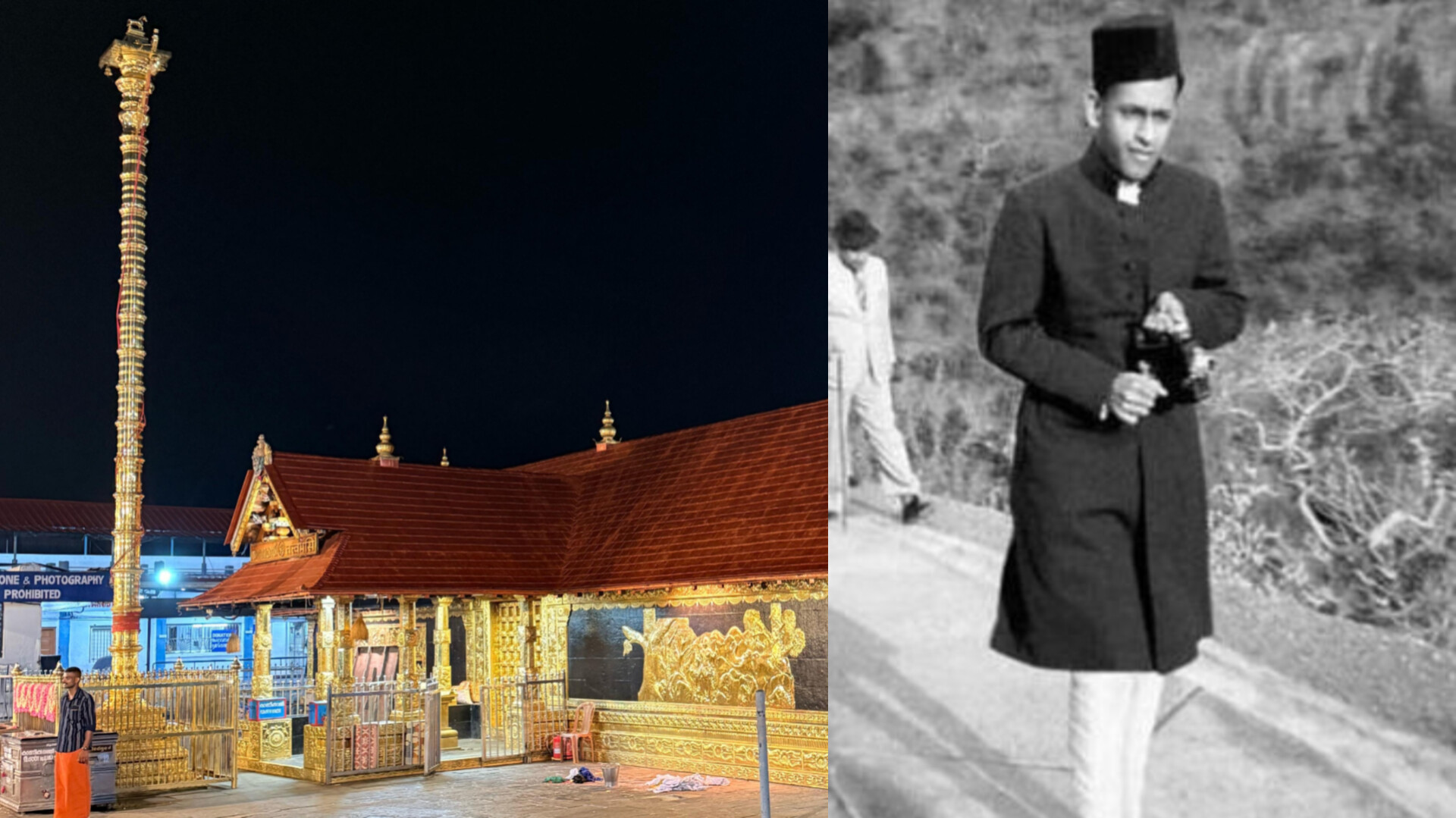Sree Chithira Attathirunal on October 21 — also marks the 1st anniversary of SAYSS

Sabarimala: The Travancore Devaswom Board (TDB) will observe Sree Chithira Attathirunal, the birth anniversary of His Highness Sree Chithira Thirunal Balarama Varma, on October 21 at the Sabarimala Sannidhanam with special rituals and commemorative programmes.
By his divine inspiration and ideals, We, Sabarimala Ayyappa Yuva Seva Samithi (SAYSS) was founded on the auspicious day of Chithira amavasya, coinciding with the birth star of Sree Chithira Thirunal. Every year, the SAYSS anniversary is observed on Chithira Nakshatram, honouring his memory and vision. This year, the organisation proudly marks its first anniversary on the Maharaja’s birth day, reaffirming its mission of devotion, service, and the preservation of temple traditions
Click Here: About SAYSS
Who Was Sree Chithira Thirunal Balarama Varma
Sree Chithira Thirunal Balarama Varma (1912–1991) was the last ruling Maharaja of Travancore. Ascending the throne in 1931, he guided the state through major political, social, and religious transformations until Travancore’s integration with the Indian Union in 1949. Revered as a reformist and devout ruler, he combined modern governance with a deep commitment to dharma and temple traditions.
Why Sree Chithira Attathirunal Is Celebrated
The Travancore Devaswom Board observes this day annually in gratitude for his far-reaching contributions to temple administration, social reform, and the spiritual welfare of devotees. At Sabarimala, the day is marked with special abhishekam, Ganapathi homam, deeparadhana, and annadanam to devotees.
His Contributions to Sabarimala and Temples
Sree Chithira Thirunal’s influence on Sabarimala was both administrative and spiritual.
Rebuilding Sabarimala After the 1950 Fire:
In 1950, the Sabarimala Ayyappa Temple was gutted in a devastating fire following an attack by miscreants. Under the guidance and initiative of Sree Chithira Thirunal, along with the newly formed Travancore Devaswom Board, the temple was rebuilt and revived. His vision ensured that the sanctity, architecture, and rituals of the shrine were preserved, enabling the Ayyappa pilgrimage to flourish again.
Formation of the Travancore Devaswom Board (TDB):
He established the TDB in 1949 to ensure efficient, transparent, and accountable management of temples. This institutional framework continues to govern and protect temples like Sabarimala to this day.
Temple Entry Proclamation (1936):
His historic proclamation opened all temples under Travancore rule to every Hindu, irrespective of caste or community — a revolutionary reform that transformed Kerala’s social and spiritual landscape.
Temple Infrastructure and Pilgrim Welfare:
The Maharaja encouraged the development of roads, rest houses, and facilities for pilgrims visiting Sabarimala and other temples, ensuring accessibility and dignity for all devotees.
Legacy
Sree Chithira Thirunal’s reign bridged tradition and progress. His leadership not only restored Sabarimala after the 1950 tragedy but also elevated it into a symbol of unity, devotion, and social equality.
The annual Sree Chithira Attathirunal observance at Sabarimala — together with the SAYSS anniversary celebrated every Chithira Nakshatram — stands as a tribute to his enduring legacy, devotion to Lord Ayyappa, and commitment to dharma and service.
